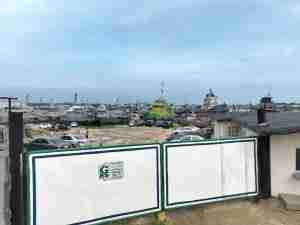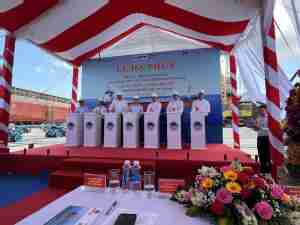The Mumbai-based Indian transport company, took on the responsibility for the logistics of the rectification columns that were required for this large-scale project. One of these - 125 m long and weighing 1,350 t - was the largest ever rectification column produced in India. Along with a range of other components, the gigantic structure was transported to Mumbai by means of a sea-going pontoon. This was followed by another sea journey from Mumbai to Dahej whereby the transport company had to provide customised lashing equipment as the load was positioned 20 metres above the pontoon during the 190 nautical mile trip. The trans-shipment point in Dahej, which had been specially constructed by the transport company for this project, was reached after 36 hours.

For the roll-off procedure of the oversize columns, the transport company relied on proven NICOLAS vehicle technology. The 125 m long and 1,350 t rectification column was moved on 64 NICOLAS "MHD SPE" axle lines (self-propelled including Power Pack Unit) whilst another 13 m long column weighing 1,000 t was transported on 48 NICOLAS "MHD SPE" axle lines to their final destination, the ethylene plant in Dahej. On the 1 km long route, the total combination had to negotiate one 180 degree turn as well as two sharp 90 degree bends. No problem for the self-propelled NICOLAS transporter. The hydrostatically driven and electronically steered modular transporters have a steering angle of 135' with which the load can be moved using standard, circle, diagonal and transverse steering modes.










